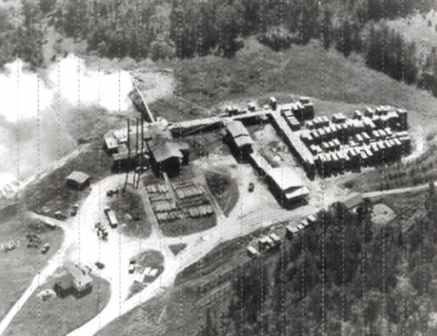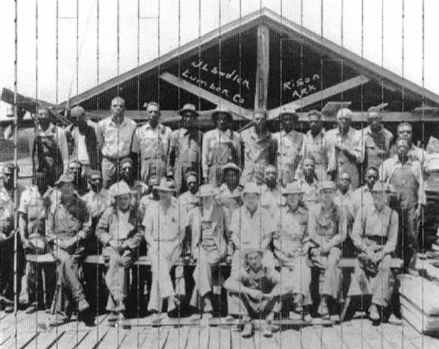Page 11
![]() Seite 12 / page 12 of
24
Seite 12 / page 12 of
24
![]() zurück / back home
zurück / back home
| in the sawmill, 130 in the woods crew and 80 operating the tram rail lines that brought logs to the mill. The mill operation had a central administrative office and a commis- sary or general store for supplying food, clothing and other items to the employees and their families. There were boarding houses for bachelors and small houses for the married mill hands. All living arrange- ments were racially segregated. Economically, the mill was a boon for cash strapped farmers. Although the woods and milling occupations were de- manding and dangerous they offered a welcome cash wage to offset the subsis- tence living on hardscrabble farms in the area. During its life, there were two sensational murders at the Clio Mill. Thomas Godfrey and an innocent bystander named McEwing were shot and killed on November 20, 1907. Clarence L. Bush was woun- ded but escaped. On November 27, 1907, several people were arrested including Burt McCartney, J. J. Prince, and C. C. Cotton for the murder of Godfrey and McEwing. When they were brought to trial, it was a sensation. The courthouse could not hold the crowd. They were tried in the December 1907 term of court. The court found C.C. Cotton not guilty. The case against McCartney and Prince was none pressed. In March 1909 there was another shooting at Clio. D. H. Duncan, who was a high-ranking member of the J.F. Rutherford Company, was shot and killed by John W. Day, another com- pany official. Day and Duncan were engaged in an argument over company policy. During the argument. Day pulled out his pistol and shot Duncan six times. Witnesses saw Day backing out of his room with a smoking gun in his hand. Day was escorted to confinement in Rison. This, too, was a sensational trial with hundreds of spectators gathering at the court- house. Justice Roebuck |
ruled that there was insufficient
Rutherford Lumber Company evidence to bring Day to trial were placed in receivership. and he was released. By 1912 all the company assets The Clio Mill closed in 1911, had been disposed of and when all the holdings of the J. F. the company ceased to exist.  C.L. GARNER & SON MILL - This aerial view shows the C.L. Garner & Son mill as it was in the early 1940's. The mill was located in the southwestern portion of Rison. It no longer exists.  MAJOR SOURCE OF EMPLOYMENT - The timber industry continues to provide jobs for the residents of Rison and Cleveland County. Pictured here is a mill crew from the J.L. Sadler Lumber Company in Rison, taken during the 1940's.
|
![]() Seite 12 / page 12 of
24
Seite 12 / page 12 of
24
![]() page
1
page
1
![]() 2
2
![]() Index
Index
![]() 3
3
![]() 4
4
![]() 5
5
![]() 6
6
![]() 7
7
![]() 8
8
![]() 9
9
![]() 10
10
![]() 11
11
![]() 12
12
![]() 13
13
![]() 14
14
![]() 15
15
![]() 16
16
![]() 17
17
![]() 18
18
![]() 19
19
![]() 20
20
![]() 21
21
![]() 22
22
![]() 23
23
![]() 24
24
![]() zurück / back home
zurück / back home